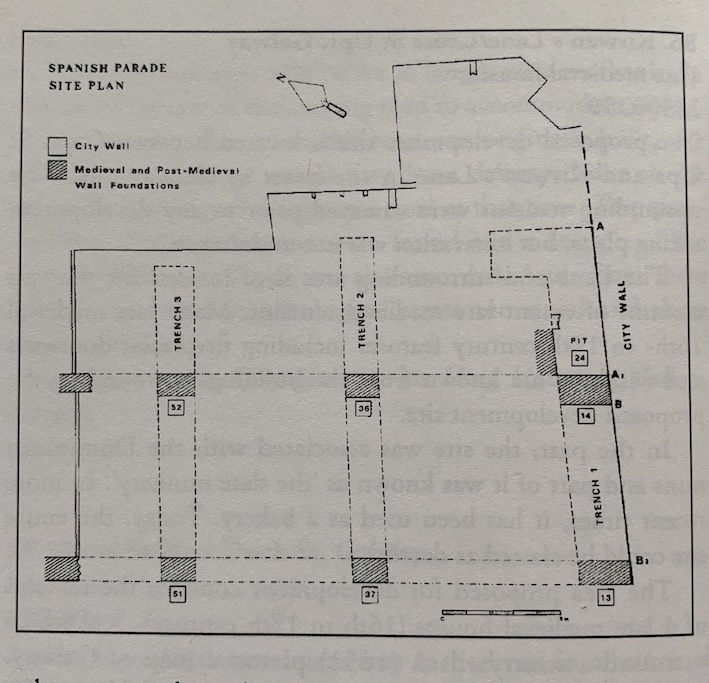County: Galway Site name: GALWAY: Spanish Parade
Sites and Monuments Record No.: N/A Licence number: —
Author: Dominic Delany, Archaeological Services Unit, UCG
Site type: Town defences
Period/Dating: Multi-period
ITM: E 529666m, N 724729m
Latitude, Longitude (decimal degrees): 53.268234, -9.054367
Pre-development archaeological assessment of the Spanish Parade site took place between 24th August and 11th September 1992. The site measured 24m north-south and 23.5m east-west Three trial trenches (15m x 1.5m) were excavated in order to assess the archaeological potential of the area.
The inner face of the medieval town wall ran north-east/south-west along the southern boundary of the site. The wall face is composed of roughly-coursed limestone, rhyolite, sandstone and granite masonry and contains some very large boulders as well as numerous small packing stones. The wall survives to an average height of 2.15m and it rests on a compacted sand and gravel base. Archaeological deposits survived between 0.5m and 2.5m below the modern ground level. Compacted organic clay deposits were located at a depth of c. 1m. These may represent primary land fills deposited here some time after the construction of the medieval town wall. The only dateable finds recovered were 2 unstratified sherds of late medieval Saintonge pottery.
The town wall is abutted by 2 substantial wall foundations, representing the east and west building lines of medieval and/or post-medieval house sites. These wall foundations were located in each of the 3 trial trenches and are similar in their method of construction. The eastern building line consists of a foundation composed of limestone and rhyolite boulders which are set in a light yellowish brown sticky daub. The western building line survives to a greater height, consisting of 2-4 courses of worked limestone masonry, with a narrow plinth, 0.2m wide, beneath which is a foundation similar to that on the east side. The remains of a rubbish pit, 2.15m x 2.15m, were also located. The edge of the pit is defined by the town wall on its south-east side and by the house wall foundation on its south-west side. The pit contained a substantial quantity of post-medieval pottery, mainly of Irish and English manufacture. Continental imports were represented by 3 sherds of westerwald pottery.
NOTE: No excavations or demolition work were undertaken in the south-east corner of the site, pending the removal of an oil tank from the adjoining property.
